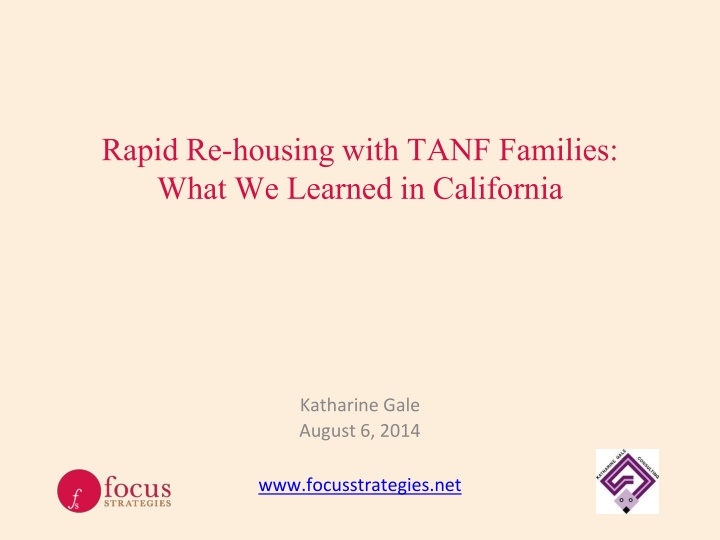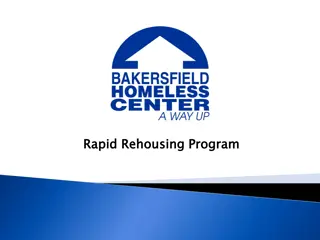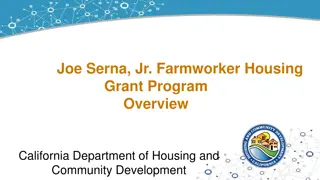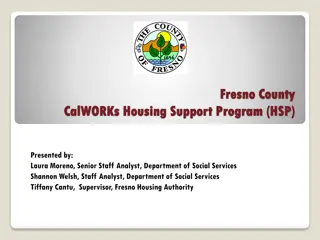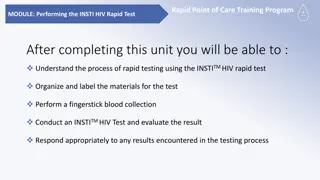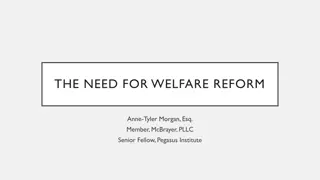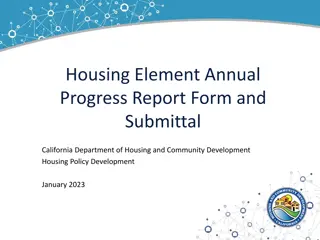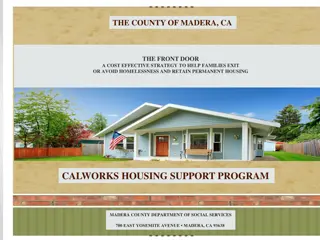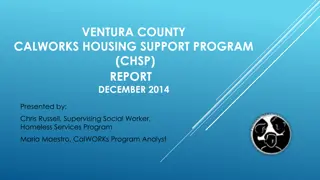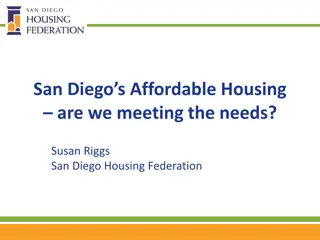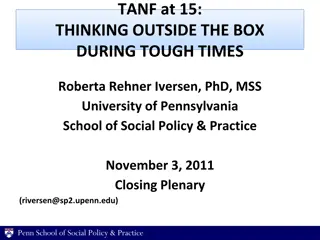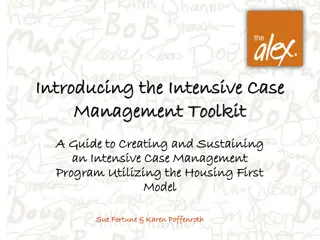Insights on Rapid Re-housing with TANF Families in California
Communities in California implemented Rapid Re-housing Programs combined with TANF support between 2009 and 2012. The program design, data management, and coordination were crucial elements that influenced the success of re-housing efforts. Despite challenges in rehousing large families and those with higher barriers, the utilization of TANF funding enhanced flexibility in covering essential costs for families in need. Improvements in data systems and collaborative efforts were key factors in supporting families experiencing homelessness.
Download Presentation

Please find below an Image/Link to download the presentation.
The content on the website is provided AS IS for your information and personal use only. It may not be sold, licensed, or shared on other websites without obtaining consent from the author.If you encounter any issues during the download, it is possible that the publisher has removed the file from their server.
You are allowed to download the files provided on this website for personal or commercial use, subject to the condition that they are used lawfully. All files are the property of their respective owners.
The content on the website is provided AS IS for your information and personal use only. It may not be sold, licensed, or shared on other websites without obtaining consent from the author.
E N D
Presentation Transcript
Rapid Re-housing with TANF Families: What We Learned in California Katharine Gale August 6, 2014 www.focusstrategies.net
Introduction Communities across the State administered HPRP between 2009- and 2012 A few also used TANF Emergency Contingency Funds Focus Strategies worked in two counties that combined HPRP and TANF, and provided technical assistance and evaluation support in other communities Summary of observations: - Program Design - Data - Culture and Coordination FocusStrategies.net
Program Design Rapid Rehousing worked for many kinds of families, including families without income Not all families needed housing search help Hardest to rehouse large families, undocumented Households with higher barriers more likely to be lost to the program before getting housing, but once housed outcomes were similar FocusStrategies.net
Program Design TANF funding was great addition because more flexible could cover costs like furniture which families needed Income changes more likely after more time in program, but housing stability not increased Screening tools helpful to provide consistent practice and guide conversations to make housing plans - In one community that used flexibility on amounts, tool did not predict length of assistance needed FocusStrategies.net
Data and Data Systems Shared look-up capacity in CalWORKS database helpful to housing workers Entering data about services into Homeless Management Information Systems for both TANF and HPRP resources was good for billing and for reporting Data quality increases with frequent reporting and program utilization Follow up with families outside of HMIS very difficult. FocusStrategies.net
Culture and Coordination Families experiencing homelessness didn t always trust their worker ; some had had negative consequences of reporting homelessness previously Important not to put the client in the middle everyone on board with the housing plans Regular gettogethers and learning collaboratives important at all levels FocusStrategies.net
For more information Katharine Gale Katharine@focusstrategies.net (510) 710-9176 www.focusstrategies.net FocusStrategies.net 1
